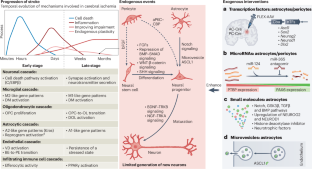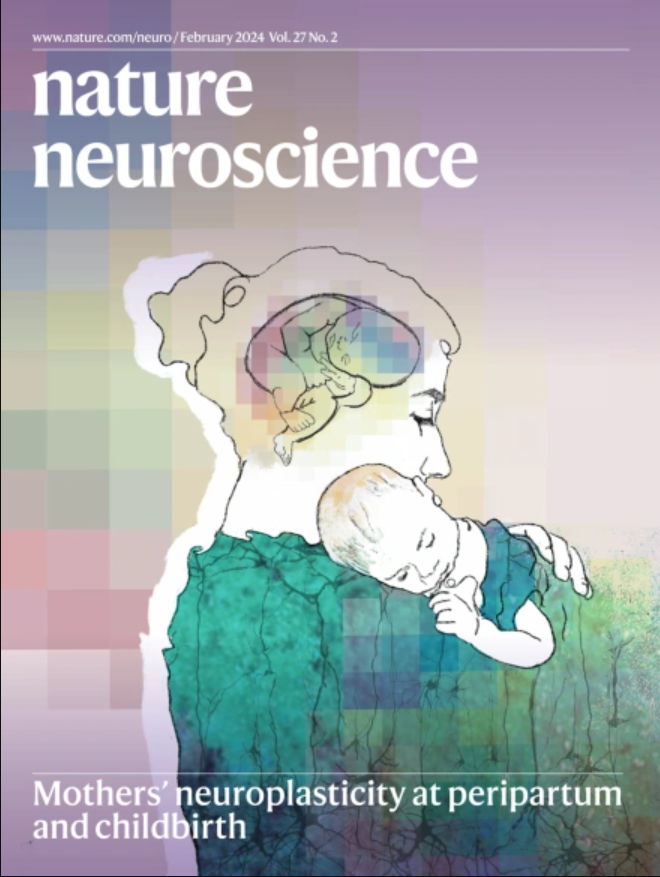改变基因、细胞和网络,在中风后重新编程大脑
IF 20
1区 医学
Q1 NEUROSCIENCES
引用次数: 0
摘要
急性缺血性脑卒中的再灌注治疗已取得重要进展。然而,大多数患者要么不符合治疗条件,要么对治疗没有反应,并继续存在相当大的功能缺陷。中风会导致神经血管单元(NVU)的病理性破坏,包括血脑屏障渗漏、神经胶质激活、神经元损伤和慢性炎症,所有这些都会形成阻碍康复的微环境。因此,寻找促进中枢神经系统恢复的方法仍然是中风研究的圣杯。在这里,我们提出了一个概念性框架来综合该领域的最新进展,该领域目前在文献中是分散和脱节的。我们认为中风恢复需要一个贯穿整个大脑的多层次的综合重编程过程,包括基因表达的变化、NVU内的内源性细胞转分化以及更大规模的神经和社会网络的重组。本文章由计算机程序翻译,如有差异,请以英文原文为准。


Changing genes, cells and networks to reprogram the brain after stroke
Important advances have been made in reperfusion therapies for acute ischemic stroke. However, a majority of patients are either ineligible for or do not respond to treatments and continue to have considerable functional deficits. Stroke results in a pathological disruption of the neurovascular unit (NVU) that involves blood–brain barrier leakage, glial activation, neuronal damage and chronic inflammation, all of which create a microenvironment that hinders recovery. Therefore, finding ways to promote central nervous system recovery remains the holy grail of stroke research. Here we propose a conceptual framework to synthesize recent progress in the field, which is currently dispersed and disconnected in the literature. We suggest that stroke recovery requires an integrated reprogramming process throughout the brain that occurs at multiple levels, including changes in gene expression, endogenous cellular transdifferentiation within the NVU, and reorganization of larger-scale neural and social networks. This review explores how stroke induces changes in gene expression, cell behavior and brain networks, offering insights into recovery. It highlights strategies to enhance cellular reprogramming and brain network reorganization for improved outcomes.
求助全文
通过发布文献求助,成功后即可免费获取论文全文。
去求助
来源期刊

Nature neuroscience
医学-神经科学
CiteScore
38.60
自引率
1.20%
发文量
212
审稿时长
1 months
期刊介绍:
Nature Neuroscience, a multidisciplinary journal, publishes papers of the utmost quality and significance across all realms of neuroscience. The editors welcome contributions spanning molecular, cellular, systems, and cognitive neuroscience, along with psychophysics, computational modeling, and nervous system disorders. While no area is off-limits, studies offering fundamental insights into nervous system function receive priority.
The journal offers high visibility to both readers and authors, fostering interdisciplinary communication and accessibility to a broad audience. It maintains high standards of copy editing and production, rigorous peer review, rapid publication, and operates independently from academic societies and other vested interests.
In addition to primary research, Nature Neuroscience features news and views, reviews, editorials, commentaries, perspectives, book reviews, and correspondence, aiming to serve as the voice of the global neuroscience community.
 求助内容:
求助内容: 应助结果提醒方式:
应助结果提醒方式:


